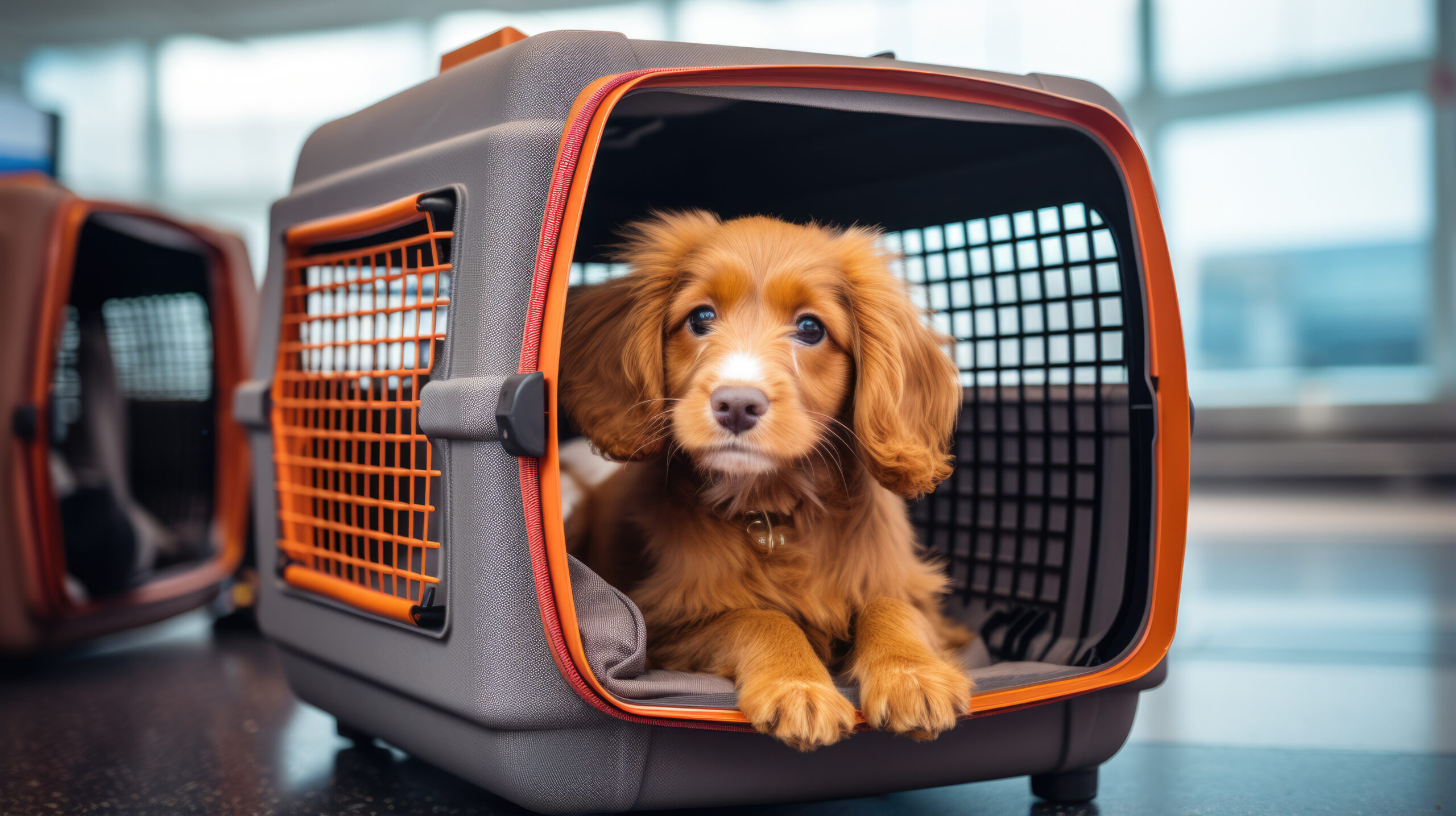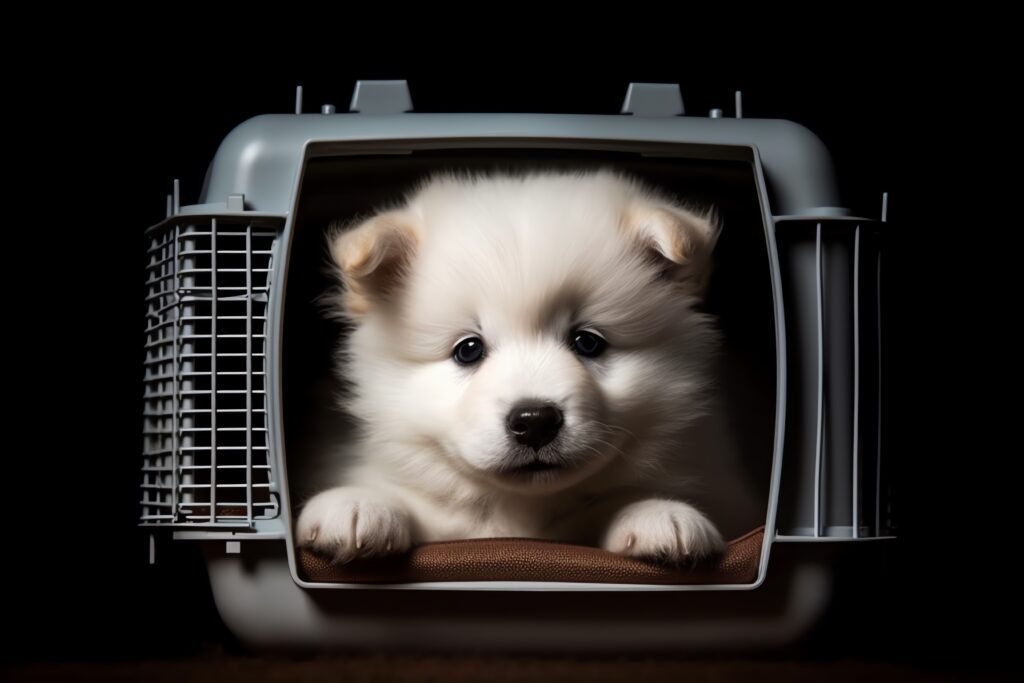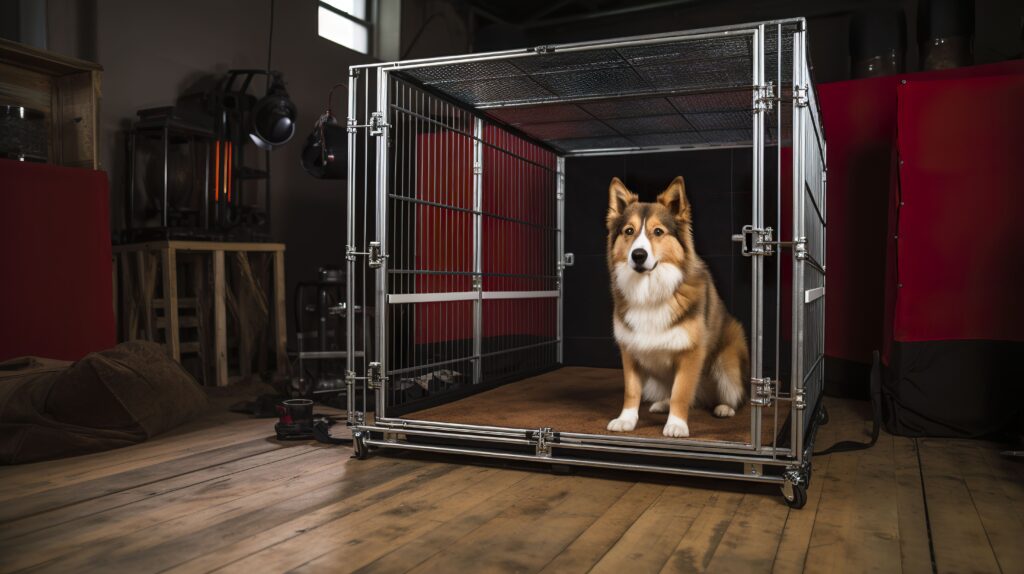
Choosing the right dog crate involves more than just function creating a safe place your dog can call its own. A good crate can help with training, travel, and comfort for your pet. Whether you’re a dog-dad veteran or a fresh-faced fur parent, knowing the ins and outs of crate shopping can lead you to good health for your pup. In this guide, we will take you through everything you must consider about “How to Choose the Perfect Dog Crate for Your Dog’s Size & Breed”, from selecting the correct type of crate and properly sizing it to teaching your dog to love their new cozy hideaway.
When you finish, you’ll have everything you need to choose the right dog crate for your special pooch!
The Ultimate Guide to the Different Types of Dog Crates
There is much variation in dog crates, with different shapes, sizes, and materials, to serve particular advantages based on your pet’s lifestyle and habits. Here’s a lowdown on some of the most popular options:
Wire Dog Crates
Wire Crates One of the most commonly used and versatile types is wire crates. They have the most ventilation and visibility and are the easiest to clean and store. These various crates are perfect for dogs who don’t mind living in a more structured setting; they are mainly used for training.
Best fit: Medium to large dogs or pets that like to have a view.
Plastic Travel Crates
Plastic crates are lightweight and portable, great for traveling. They’re cozy, offer more privacy, and are generally airline-approved.” But they don’t provide as much ventilation as wire crates.
Best fit: Small- to medium-sized dogs, frequent travelers.

Soft-Sided Crates
Soft-sided crates are made of fabric and mesh and are designed to be comfortable for your dog and easy to transport. They are great for calm dogs and short trips but unsuitable for chewers or escape artists.
Best fit: Small dogs and infrequent travel.
Heavy-Duty Crates
These are designed for strength and durability and are often made with reinforced steel. They’re ideal for dogs with separation issues or destructive tendencies.
Best for: Large, powerful breeds that watchdog or escape.
Decorative Dog Crates
For dog owners who want to combine functionality with design, decorative crates made of wood or similar materials can act as side tables or other functional items in their homes.
Sizing Matters
Choosing the right size crate is a big part of keeping your dog safe and comfortable. A crate that’s too small can leave your dog feeling cramped, and one that’s too big lessens the sense of security intended to provide. To take your pet’s measurement, do the following:
How to Measure a Dog for Crate
Height: From the top of their heads to the ground (or to the tips of their ears for pointy-eared dogs).
Length: Measure from the end of their nose to the start of their tail, then add 2–4 inches, depending on their size.
Use this guide to find the right size:
Protip: Many brands of crates provide size charts aligned with specific breeds. Refer to those for further direction.
Based on Your Dog’s Age, Behavior, and Needs
Choose a crate based on your dog’s age, temperament, and distinctive habits.
· For Puppies: Choose crates with adjustable dividers. This will allow the crate to grow with them and stop them from turning any excess space into a bathroom.
· For High-Energy Dogs: Active or destructive breeds do well in a heavy-duty wire crate for extra durability.
· For Senior Dogs: A low-threshold crate with soft bedding can help older dogs have the ease and comfort they are accustomed to.
Expert Insight: “Dogs naturally gravitate toward a den-type space,” says Dr. Karen Shaw Becker, a veterinarian. Crate training builds upon that instinct and provides boundaries in a reassuring, comfortable manner.”
Safety First

A crate needs to be more than a tool, it must be your dog’s safe place. Here are some tips to help you make it safe and comfortable:
- Look for Sharp Edges: Ensure all materials are smooth to prevent cuts or wounds.
- Add Comfy Bedding: A washable crate pad or blanket makes it a more inviting space.
- Prevent Overcrowding: Don’t stuff toys or bowls inside so your dog doesn’t have space.
- Regular Maintenance: Clean the crate weekly and inspect for loose parts that might injure your dog.
By ensuring that your dog’s crate is a safe, clean, and cozy refuge, you’ll create a space they’ll love returning to.
If your dog has never been crated before, introduce the crate gradually. Always use your dog’s crate and positively associate it with the crate itself. For a successful introduction, follow these steps:
Take Slow: Make the crate available by leaving it open for your dog to explore independently.
Positive Reinforcement: Reward them for getting near or inside the crate with goodies, positive words, or their favorite toys.
Short periods: Start by spending time in for a few minutes.
Feed in the Crate: Feed your dog their meals in their crate to create positive associations.
Be Patient: Don’t shove your dog in the crate or use it as punishment.
“Create a positive environment so that the crate is not a place of confinement,” says Sarah Williams, a dog behavior consultant. “Patience and consistency are everything with successful crate training.”
How to Choose the Right Dog Crate: The Best Dog Crate Guide
Practical Considerations to Keep in Mind When Shopping for a Dog Crate:
- Price: While top-of-the-line crates are pricier, they’re made to last longer and tend to have more safety features.
- Portability: You need a collapsible or lightweight design if you travel a lot.
- Features: Consider extras like removable trays that make cleaning easier or double-door access.
- Aesthetic: Decorative crates add function and flair to the modern home.
Breeds Weigh into Answer: What Their Breeds Are Like in Real-Life Scenarios
- Golden Retrievers: Wire crates with removable dividers for growing puppies.
- Yorkshire Terriers: Soft-sided crates that are easy to take with you and provide a warm and cozy feeling.
- Bulldogs: Heavy-duty crates that withstand their muscular build and chewing tendencies.
Set Up a Comfortable Area for Your Pup
The best dog crate is a game changer for you and your furry friend. With the right fit, feature choice, and introduction process, you’ll create a safe, snug space they’ll love.
Bonus Tips for Crate Training
Besides selecting an appropriate crate and gradually getting your dog used to it, here are a few more tips that help make crate training go smoothly and be more successful.
Be Consistent: After you have picked a spot for your dog’s crate, do your best to keep it there. This will get your dog used to its unique space and ensure its comfort.


